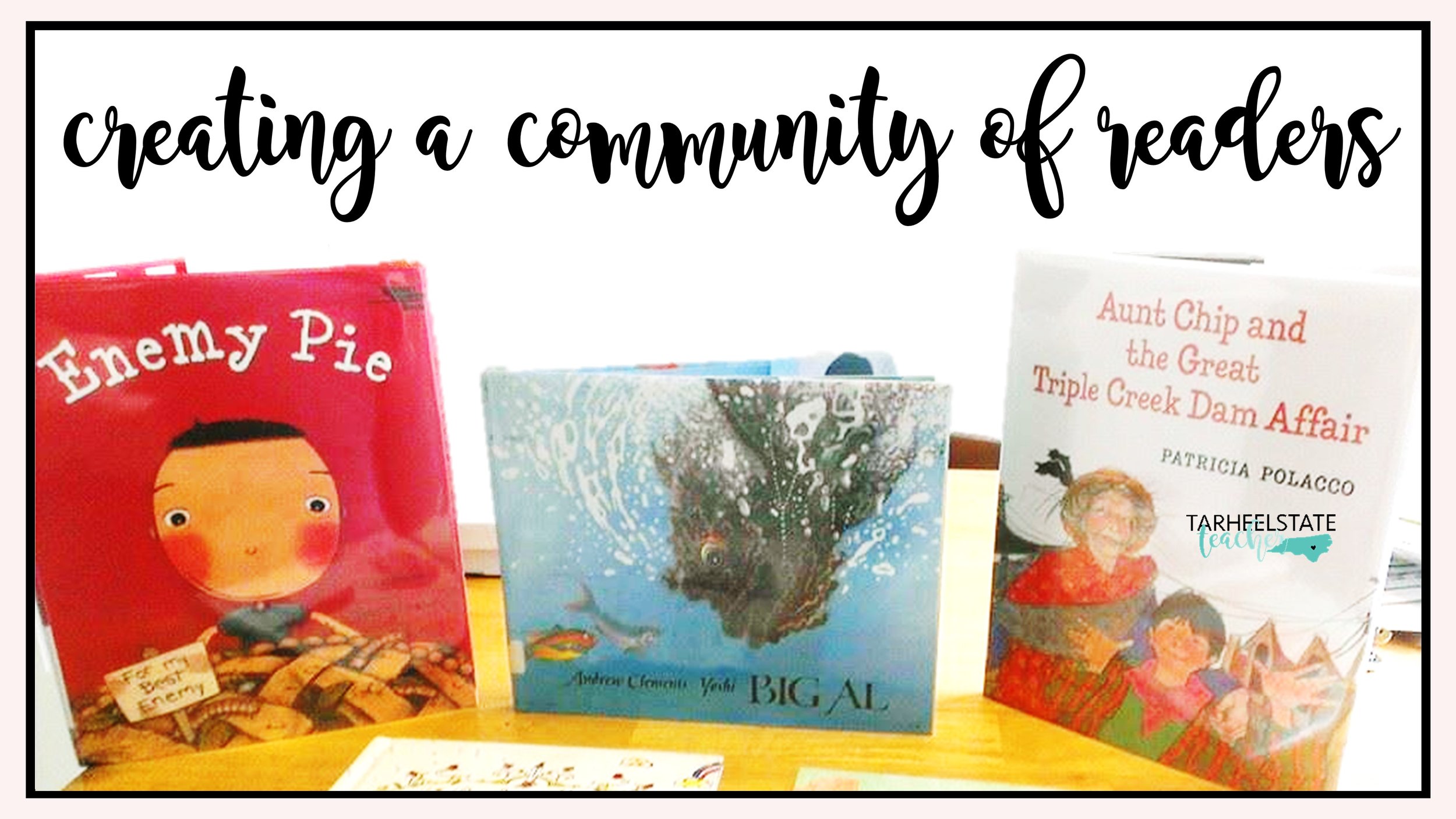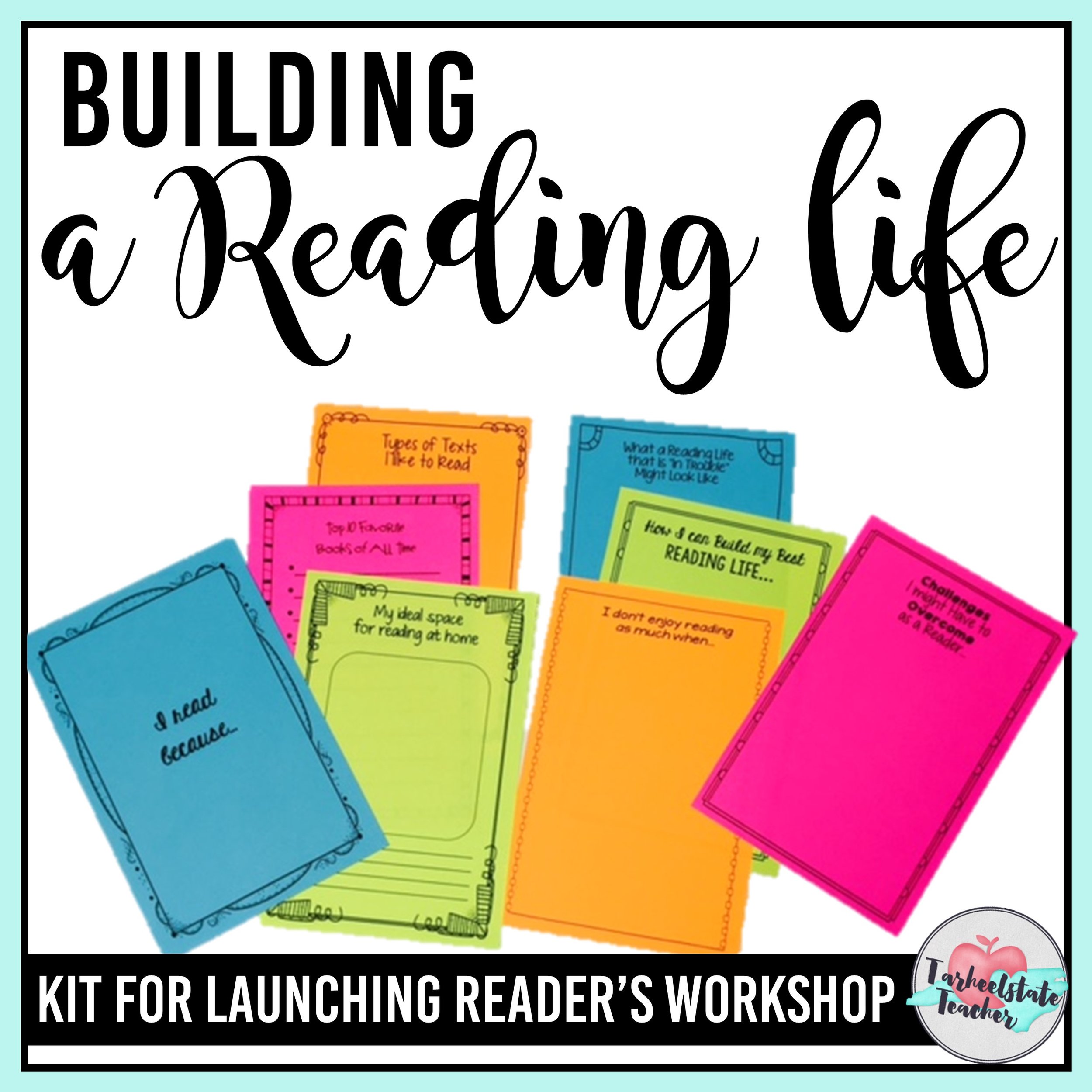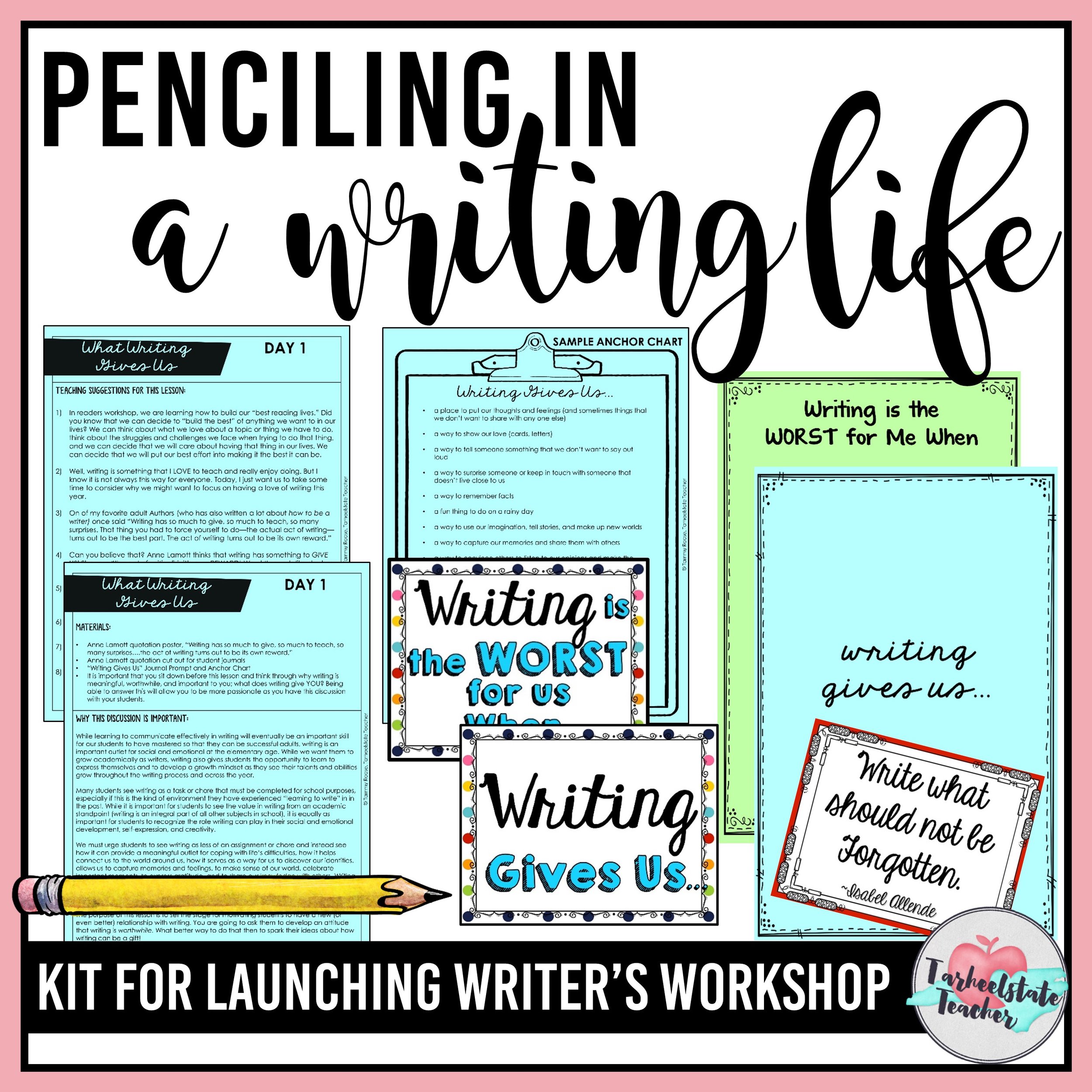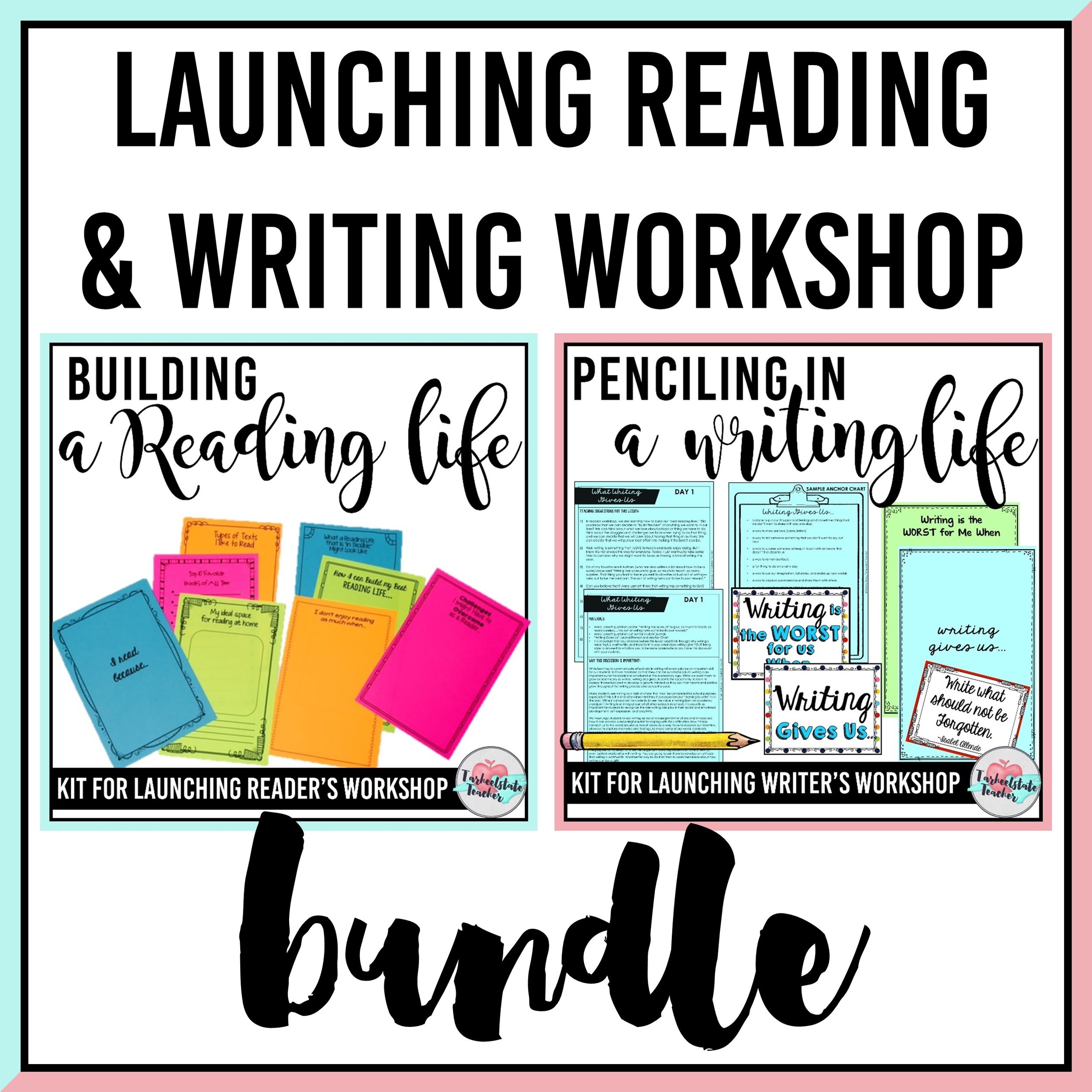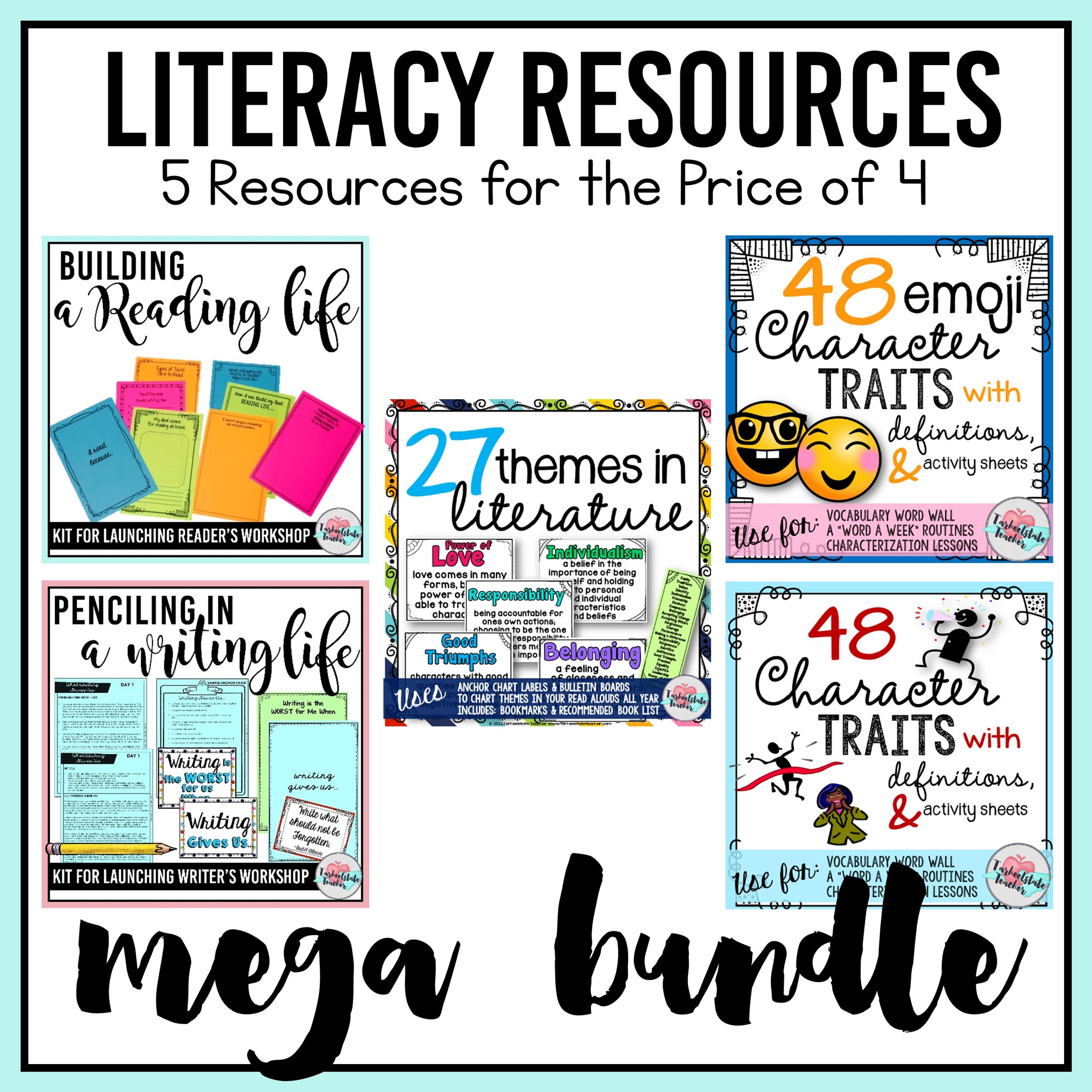4 Important First Steps for Creating a Community of Readers
Routines? Procedures? You've thought it all through. I'm sure you are well on your way to setting up your school year for success. But, have you thought about what you expect out of students' attitudes?
Have you envisioned the attitudes you want to develop in your students? What should a student who leaves your classroom in a year be like? How should they feel about learning? What will you do to impact that?
These - and other questions - are all important as you create a community of readers in your students! Read on as I share four important first steps to ensuring this community of readers happens.
When I'm preparing for the beginning of the year and thinking about how to get my routines and procedures underway, I have to admit that I spend more time focused on the feelings and attitudes that I want to exist in each subject area than detailing every little step on a lesson plan.
In math, I expect my students to be ready to persevere through the hard stuff, to have GRIT, and to develop a passion for math, but I am prepared for the realities that they have not had a lot of challenge and rigor in previous years.
When I launch writer's workshop, I'm mentally ready for a large chunk of my students to have a strong distaste for writing, knowing that getting them to buy into the enjoyment that can come from a worthwhile writing life is my first battle.
And in reading, I know that I will have some students who do not enjoy reading and have not yet developed a strong relationship with books. It's my job to change attitudes!
I expect all of my students to fall in love with reading, but to want that is one thing; to make it happen takes a little more work (or planning or time, however you want to define work!). An onlooker might just think having a classroom full of readers is magic, or it's easy, or all of those kids were already readers, and that's just not true!
I think the biggest change maker for my kiddos compared to what I've observed in other teachers is that I just believe "EVERY CHILD A READER" and that this is my ultimate mission and it is MY JOB to make it true.
In my conversations with other teachers on the playground or at lunch, you will never find me saying "He just doesn't like to read." or "She is just not a reader." I won't even say, "That kid HATES reading," even if it might be true. Teachers, attitude is EVERYTHING, and what you think and say, you materialize.
By 4th and 5th grade, most of my students have overcome the struggles of reading words, but many of them still need to develop stamina, quite a few struggle to find "just the right" book that will keep their attention, and a few have fluency issues that cause reading to be a laborious task.
Note: Some of the links in this post are affiliate links. This means that I am a participant in the Amazon Services LLC Associates Program, an affiliate advertising program designed to provide a means for sites to earn advertising fees by advertising and linking to amazon.com. Read my full disclosure here.
How do I begin to set up my year with an environment that encourages kids to become readers and that keeps the fire in the belly of those kids who already have a strong love of reading?
It starts before students even walk into my classroom! In the letter I send to students over the summer, I share how important reading will be in our classroom this year.
Here's a little snippet from last year's letter to students...
...notice all the attitudes I'm trying to create? Later in the letter, I wrote an entire paragraph about my excitement towards reading...I don't do this for any other subject. I always have to do a lot of tweaking to get my letter to fit on one page, but really, our year will be filled with a passion for reading, the books we share will create some of our favorite memories, so it's worth it to elaborate on my passion and enthusiasm for reading in this letter. I want my students to understand early on that we will become a community of readers - even if they don't fully comprehend what that means just yet.
Now, surely you are thinking that this letter does not turn my non-readers into Wild Readers just by saying so. I know that, but taking the time to tap into my own passion for reading and all the things I'm getting excited about for the new year is really important. No doubt, this letter to my students is the first step towards saying goodbye to summer and hello to a new group of kiddos, while sneaking in my community of readers philosophy.

Attitude is everything! The next thing I do to prepare for creating a community of readers is to gather my "Building a Reading Life" picture book read alouds.
I always launch my readers workshop by reading Aunt Chip and the Great Triple Creek Dam Affair by Patricia Polacco on the first day of school. The people of Triple Creek used to have a flourishing reading community, until the tv tower came to town. Now, books are used to fill pot holes, sit on as stools, to prop open doors, and to plug the town dam. No one even knows that books can be read! That is, until Aunt Chip starts teaching Eli to read!
This book definitely expresses the importance of reading and the dangers that the human race may face if we stay glued to our televisions (or digital devices) and decide reading doesn't matter. Aunt Chip is a longer book, so it may take two days to read, but if you have not read this book, RUN to the LIBRARY NOW or better yet, just buy it because you will want to use it EVERY YEAR here after!
Want more ideas to launch your reader's workshop in order to help students "Build a Reading Life"? Check out my Building a Reading Life Reader's Workshop Launch Kit .
By choosing a read aloud for the first day of school that highlights the importance of reading, I can begin to create an environment where students say "Not reading is a bad thing!" "We don't want to be like the people of Triple Creek." "Wow, it's sad that they forgot how to read!"
The Story of Aunt Chip and the town of Triple Creek is a warning to us all and my impressionable students are always in disbelief at how bad the townspeople have let their town get. Books focused on a "Love of Reading" allow me to start having discussions about how important reading is!
I almost always plan for the first chapter book I read to have living a literate life as one of its strongest themes. I've used Just Juice by Karen Hesse and Fish in a Tree by Linda Mullaly Hunt. Both have main characters who have dyslexia and struggle with reading.
If my first chapter book does not specifically have a literacy focus, I am sure to choose my read aloud wisely based on what I've learned about my students in the first week or so of school. For example, The Tiger Rising by Kate DiCamillo has always grabbed the attention of my 4th and 5th graders and it's a quick read with lots of depth. {I've written about other read alouds I'd suggest if you are looking for chapter book ideas.}
I know it doesn't sound like a well-planned teacher, but I have begun a few of my years not quite sure which chapter book I wanted to read first. I always have my favorites in mind and I choose based on what I learn about my students during the first week. I give you permission to do the same!
I mean really, it is so important to choose read alouds that make kids laugh and that are just enjoyable!
During the first two weeks of school, I read aloud to my students at least twice a day, focusing one of my read alouds on behavior and building community and the other on, you guessed it--our reading life!
I always read Big Al by Andrew Clements on the first day of school. I focus on the concept of belonging, but the book is a hoot and the kids love it! {you can read my detailed lesson plan here}
I also read lots of Helen Lester books at the beginning of the year (like Hooway for Wodney Wat, Tacky the Penguin, Me First, and Hurty Feelings).
Alexander and the Terrible, Horrible, No Good, Very Bad Day by Judith Viorst will make an appearance before the first week is over. All of these books are QUICK reads. They are fun. I read them in funny voices, I get loud, I get country, I talk without being able to say my r's (for Wodney Wat), and I speed up or slow down to show how terrible, horrible, no good, very bad Alexander's day was.
These books allow us to create a bond around reading. Some of my students {think they} don't like reading chapter books (yet), but they absolutely have enjoyed listening to the picture books I share with them.

I know that my 4 suggestions have not even begun to chip away at how teachers can develop a love of reading in our classrooms, but with these four important steps, you have begun to set a foundation for a year full of reading, a year full of children who are ready to be molded by your passion for reading.
Because I know it takes more than just these few things, I will be sharing more details about what I do during the first two weeks of school that almost always turns every.single.child into a reader without much twisting of the arm from me.
I call the first few weeks of school the "sifting" phase.
With your passion for reading expressed each and every day, you are getting as many students happily reading as possible and sifting out your tougher nuggets so that you can focus on them more when your independent reading time launches.
Some students will even come around to reading because their friends become more enthusiastic! Positive peer pressure is a great thing to watch! {I've written more about targeting struggling readers if you are interested in specific tips for them!}
If you need more encouragement for creating an environment where kids grow in their love of reading (and believe me, their test scores will too when it's not all about increasing reading rates and getting good at multiple choice tests), I highly recommend reading Donalyn Miller's The Book Whisperer. I read The Book Whisperer and Reading in the Wild last summer, and although most of her methods and attitudes aligned with the way I already run my reader's workshop, it was highly motivating to have confirmation in my approach towards reading.

If you are more than ready to help your students build a strong and literate reading life, I've created an entire set of Journal Prompts, Anchor Charts, and Reading-Focused Quotation Posters for Building a Love of Reading. The Building a Reading Life Kit also includes 10 mini-lessons with sample anchor charts to make it EASY for you to implement this unit with your students this year! I use this kit for all of my reading lessons during the first two-three weeks of school.
If you’d like to grab the first minilesson in the Building a Reading Life unit, you can share your email below to get the goodies sent to your inbox!
Best of luck with your community of readers!

